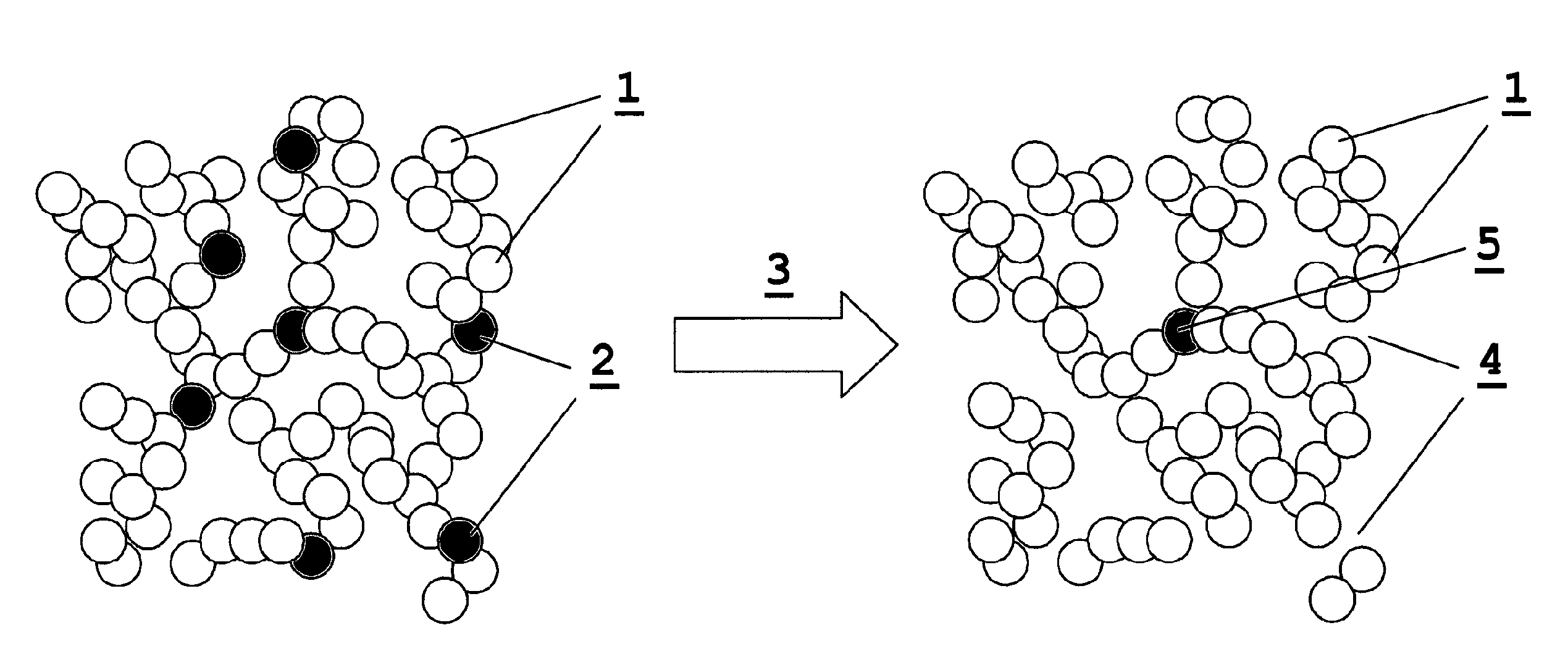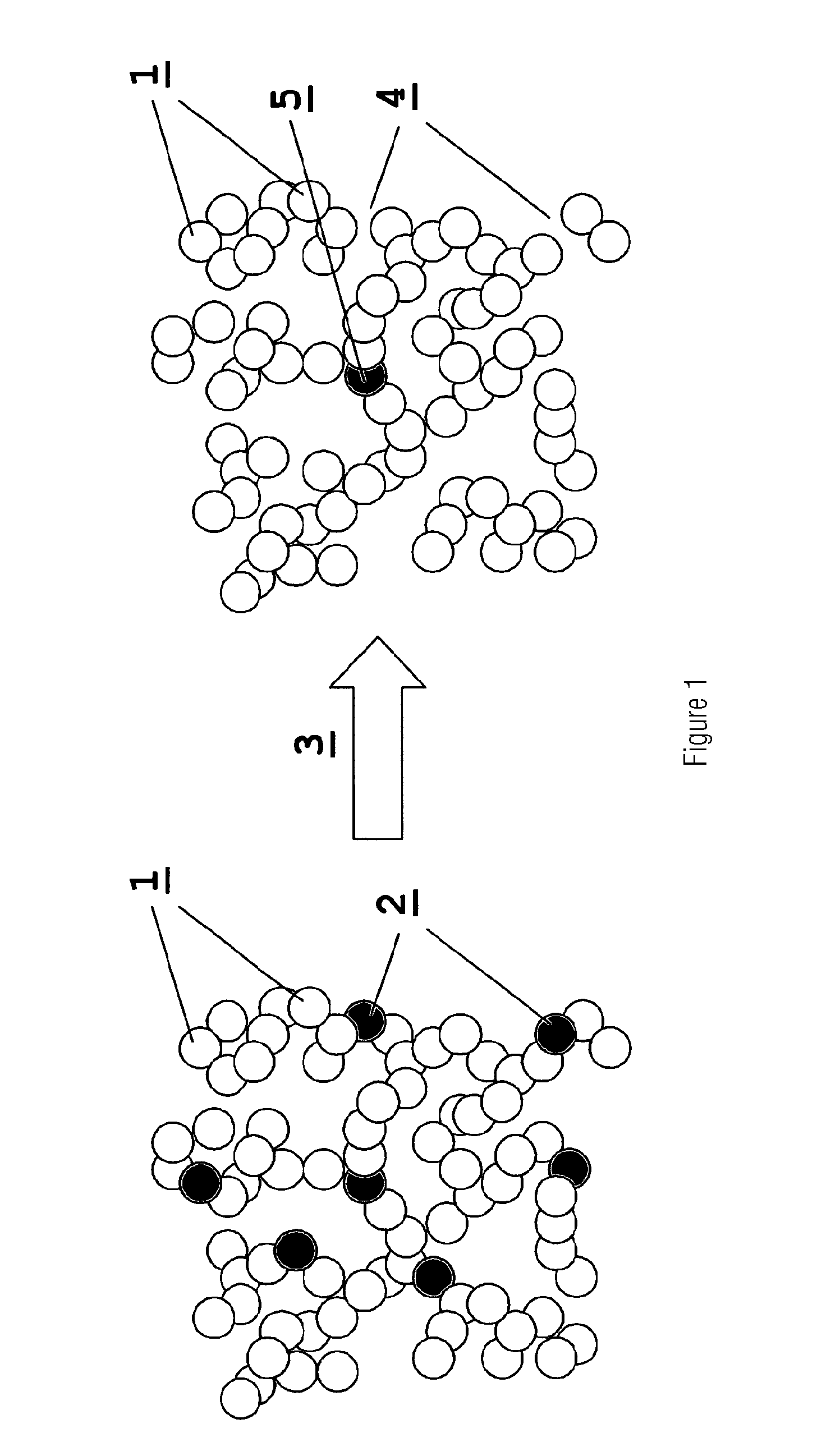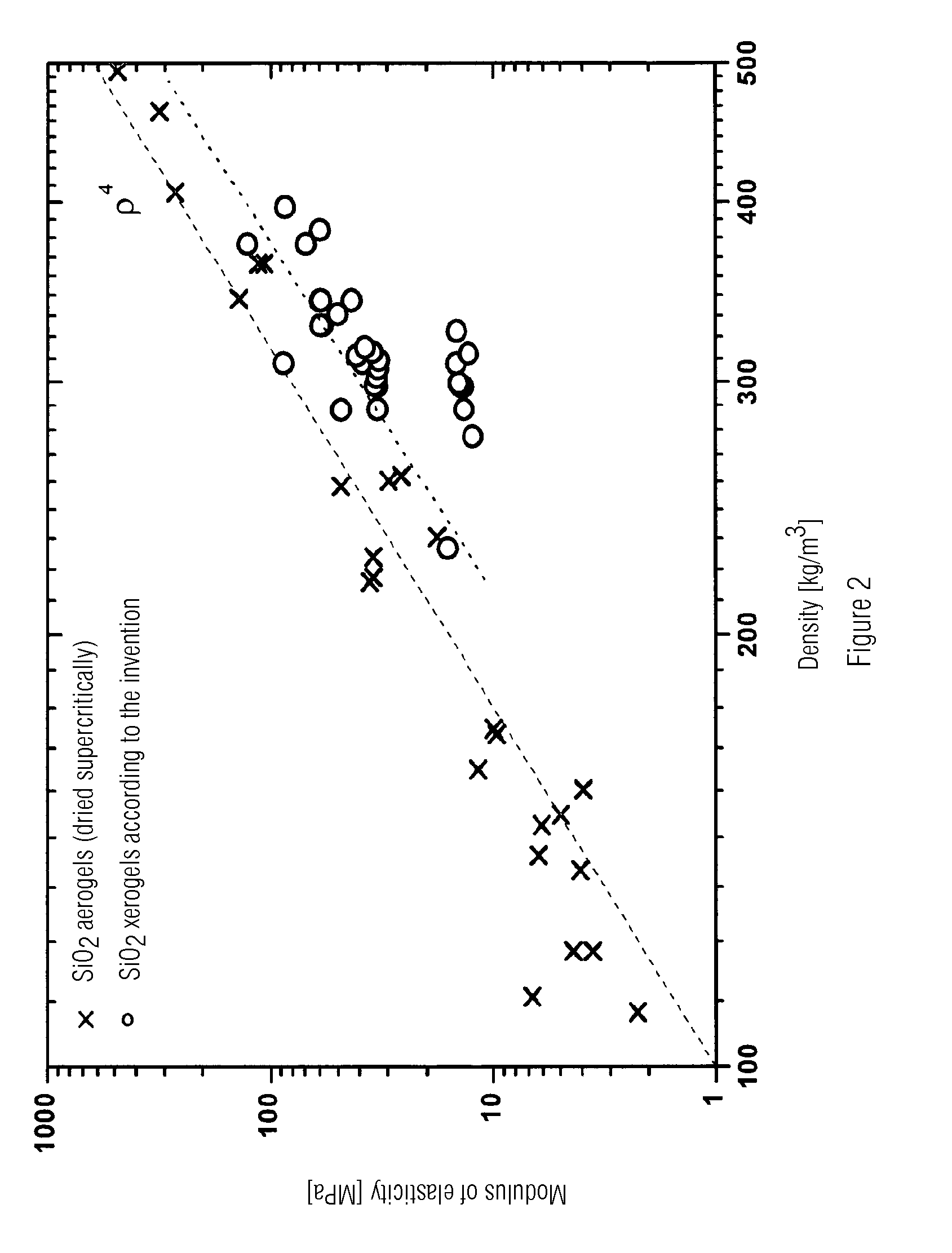Method for producing a porous sio2-xerogel with a characteristic pore size by means of a bottom-up method using a precursor that has organic solid skeletal supports
a technology of organic solids and xerogels, which is applied in the field of bottom-up methods for producing porous sio2-xerogels with a characteristic pore size, can solve the problems of disadvantages of autoclave processing, time and resources, and energy consumption, and achieves good mechanical stability, low thermal conductivity, and modulus of elasticity
- Summary
- Abstract
- Description
- Claims
- Application Information
AI Technical Summary
Benefits of technology
Problems solved by technology
Method used
Image
Examples
Embodiment Construction
[0026]For the method according to the invention, basically all the polymer, polycondensate or polyadduct precursors (=monomers) or copolymer, cocondensate or coadduct precursors which can be networked herein, for example monomers for resorcinol-formaldehyde resins, hydrocarbons, epoxides, amines, polyesters, polyimides, polyurethanes or proteins, which are soluble in polar protic solvents (preferably mixtures of water and an alcohol, here preferably ethanol), are suitable.
[0027]By preference, monomers or mixtures thereof are selected which polymerize or condense as a result of setting the pH value and the temperature in the same range as the inorganic network.
[0028]In addition to catalysts, additives are all the substances which increase the dispersibility or solubility of the organic polymer particles or of the carbon particles by means of physical or chemical bonds, for example also solubilizers and, in the case of radical polymerization, also radical starters.
[0029]“Organic polym...
PUM
| Property | Measurement | Unit |
|---|---|---|
| density | aaaaa | aaaaa |
| size | aaaaa | aaaaa |
| temperature | aaaaa | aaaaa |
Abstract
Description
Claims
Application Information
 Login to View More
Login to View More - R&D
- Intellectual Property
- Life Sciences
- Materials
- Tech Scout
- Unparalleled Data Quality
- Higher Quality Content
- 60% Fewer Hallucinations
Browse by: Latest US Patents, China's latest patents, Technical Efficacy Thesaurus, Application Domain, Technology Topic, Popular Technical Reports.
© 2025 PatSnap. All rights reserved.Legal|Privacy policy|Modern Slavery Act Transparency Statement|Sitemap|About US| Contact US: help@patsnap.com



